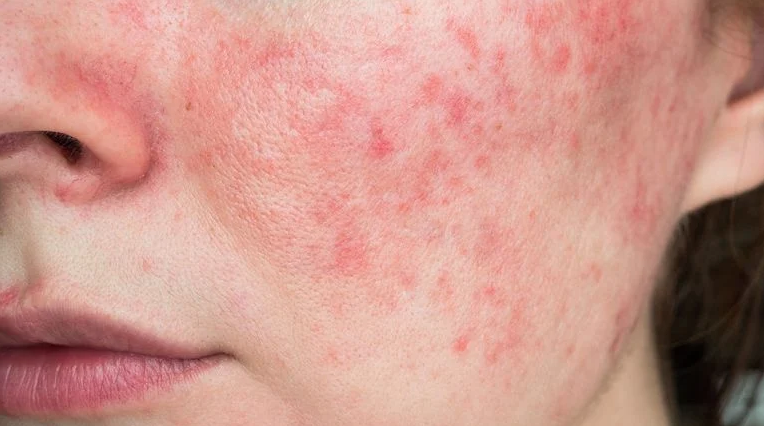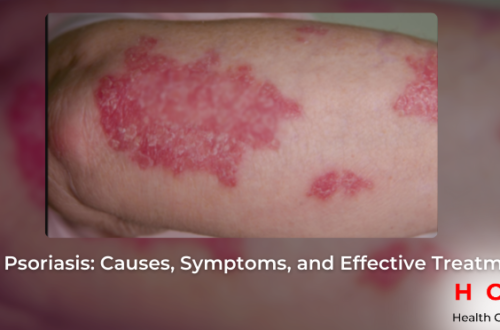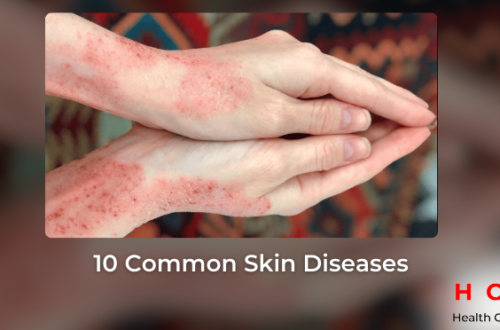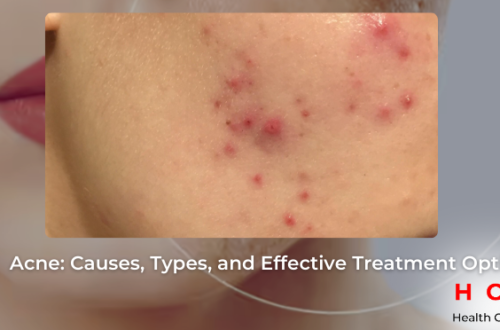
Rosacea: Understanding the Causes, Symptoms, and Effective Treatments
Rosacea is a long-standing, inflammatory skin disorder that is mainly found on the face, and consequently produces skin redness and visible blood vessels, and at times small, pus-filled pimples. Sometimes confused with acne, eczema, or other skin reactions, rosacea can be painful and limits the sufferer’s social, professional, and personal activities because of its chronic nature. Unfortunately, rosacea cannot be cured but managing the causes of the condition along with their symptoms can be dealt with better.
In this article, the detailed information about the causes of rosacea, signs and symptoms that characterise the disease, as well as the ways of effective control of flare-ups will be provided.
What is Rosacea?
Rosacea is a chronic skin disease which primarily occurs on the region about the center of the face, specifically in the nose, cheeks, chin, and forehead areas. They commonly begin as such, as a natural inclination to blush or flush more than the average person and the redness begins to linger. In more severe form, the condition may beginning manifest itself as thick skin – condition known as Rhinophyma around the nostrils or eye lids can also become irritated and red.

Rosacea is particularly widespread among white-skinned people but it also occurs among other skin types. The condition is normally seen after 30 years of age and affects many women and men though the later present serious symptoms that may hinder them from performing basic tasks.
Causes of Rosacea
The exact cause of rosacea remains unknown, but several factors are believed to contribute to its development. These include:
- Genetics: A family history of rosacea increases the likelihood of developing the condition, suggesting a genetic component.
- Immune System Response: Some researchers believe rosacea may be linked to an overactive immune response, where the body reacts too strongly to certain stimuli, leading to inflammation.
- Demodex Mites: These microscopic mites are found on everyone’s skin, but people with rosacea tend to have a higher number of these mites, which could contribute to inflammation.
- Bacteria: A specific type of bacteria known as Helicobacter pylori, commonly found in the gut, is thought to play a role in rosacea by causing blood vessels to dilate.
- Environmental Triggers: Certain environmental factors can trigger or worsen rosacea symptoms, including sun exposure, hot or cold weather, wind, and humidity.
Common Triggers of Rosacea
People with rosacea often experience flare-ups due to specific triggers. While triggers can vary from person to person, common ones include:
- Sunlight: UV exposure is one of the most significant triggers for rosacea flare-ups. Sunscreen is essential for managing symptoms.
- Stress: Emotional stress and anxiety can cause rosacea symptoms to worsen.
- Spicy Foods and Alcohol: These can dilate blood vessels, causing facial redness and flushing.
- Heat: Hot weather, baths, and beverages can exacerbate rosacea symptoms.
- Exercise: Vigorous exercise can lead to flushing and increased facial redness.
- Skincare Products: Harsh cleansers, fragrances, and alcohol-based products can irritate the skin and worsen rosacea.
Symptoms of Rosacea
Rosacea can present itself in a variety of ways, and its symptoms often evolve over time. The most common symptoms include:
- Facial Redness: Persistent redness on the cheeks, nose, chin, and forehead is the most noticeable symptom of rosacea. This redness may resemble a sunburn or blush and can become more permanent over time.
- Visible Blood Vessels: Small blood vessels (telangiectasia) may become visible on the skin’s surface, especially around the nose and cheeks.
- Bumps and Pimples: Rosacea can cause red, pus-filled bumps similar to acne, although they do not have blackheads or whiteheads. These bumps can be tender and inflamed.
- Thickened Skin: In advanced stages, rosacea can cause thickening of the skin, particularly around the nose. This condition, known as rhinophyma, is more common in men.
- Eye Irritation: Ocular rosacea can cause the eyes to become red, dry, and irritated. In severe cases, it can lead to blurred vision and eyelid inflammation.
- Burning or Stinging Sensation: Many people with rosacea experience burning, stinging, or itching sensations in the affected areas.
Types of Rosacea
Rosacea can be categorized into four main subtypes, depending on the symptoms:
- Erythematotelangiectatic Rosacea (ETR): This type is characterized by facial redness, flushing, and visible blood vessels. It may also cause the skin to feel dry and sensitive.
- Papulopustular Rosacea: This type resembles acne and is marked by redness, swelling, and breakouts of pus-filled bumps (papules and pustules). It is commonly found in middle-aged women.
- Phymatous Rosacea: This subtype causes thickening of the skin, most commonly on the nose, leading to a swollen and bumpy appearance (rhinophyma).
- Ocular Rosacea: This type affects the eyes, causing redness, dryness, irritation, and swelling of the eyelids. If untreated, ocular rosacea can lead to serious eye problems.
Treatment Options for Rosacea
While there is no cure for rosacea, various treatments can help manage symptoms and reduce flare-ups. The right treatment plan will depend on the type and severity of rosacea and may involve a combination of lifestyle changes, medications, and skincare products.
1. Topical Medications
- Metronidazole: This topical antibiotic is commonly used to reduce inflammation and redness in rosacea. It is available in cream, gel, and lotion forms.
- Azelaic Acid: Azelaic acid helps reduce redness, swelling, and acne-like bumps. It is often used in cases of papulopustular rosacea.
- Brimonidine and Oxymetazoline: These topical medications constrict blood vessels, providing temporary relief from redness.
2. Oral Medications
- Oral Antibiotics: Low-dose oral antibiotics such as doxycycline can help reduce inflammation and treat moderate to severe rosacea.
- Isotretinoin: In severe cases of papulopustular rosacea, isotretinoin (commonly used for severe acne) may be prescribed to reduce the formation of pimples and inflammation.
3. Laser and Light Therapy
Laser treatments, such as pulsed-dye lasers and intense pulsed light (IPL) therapy, can help reduce the appearance of visible blood vessels and redness. These treatments target the dilated blood vessels beneath the skin’s surface, reducing their visibility.
4. Skincare for Rosacea
- Gentle Cleansing: Use a mild, soap-free cleanser to avoid irritating the skin. Avoid using abrasive scrubs, as they can worsen redness and inflammation.
- Moisturizing: Keeping the skin well-hydrated is essential. Opt for fragrance-free, non-comedogenic moisturizers designed for sensitive skin.
- Sunscreen: Sun exposure is a major trigger for rosacea. Always apply a broad-spectrum sunscreen with SPF 30 or higher when going outdoors.
5. Lifestyle Changes
- Identify and Avoid Triggers: Keeping a diary to track what triggers flare-ups can be helpful. Avoid common triggers like hot weather, spicy foods, alcohol, and stress.
- Stress Management: Practicing relaxation techniques such as meditation, yoga, or deep breathing exercises can help manage stress, which is a known trigger for rosacea.
- Dietary Changes: Avoiding foods and drinks that trigger flare-ups, such as spicy foods, hot beverages, and alcohol, can help reduce symptoms.
Preventing Rosacea Flare-Ups
While rosacea cannot be completely prevented, certain steps can help minimize flare-ups and keep symptoms under control:
- Use Sunscreen Daily: Protect your skin from UV rays by wearing sunscreen every day, even on cloudy days.
- Avoid Extreme Temperatures: Both hot and cold temperatures can trigger rosacea symptoms. Try to stay in a comfortable environment and avoid exposure to harsh weather conditions.
- Choose Skincare Products Carefully: Use products designed for sensitive skin that are free of fragrances, alcohol, and harsh chemicals.
- Manage Stress: Since stress is a common trigger, finding ways to reduce stress can help keep rosacea in check.
Rosacea is a recurrent condition, which means that it has to be managed over and over or treated continuously. Sometimes, it is irritating but knowing your potential causes and consulting your dermatologist who will work hand-in-hand with you to ensure you are managing your episodes. If managed properly, rosacea should not hinder many individuals from having healthy skin, free from breakouts and lead a normal lifestyle.





